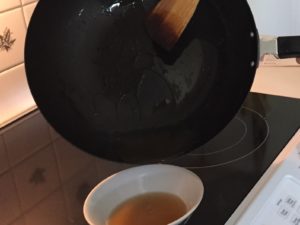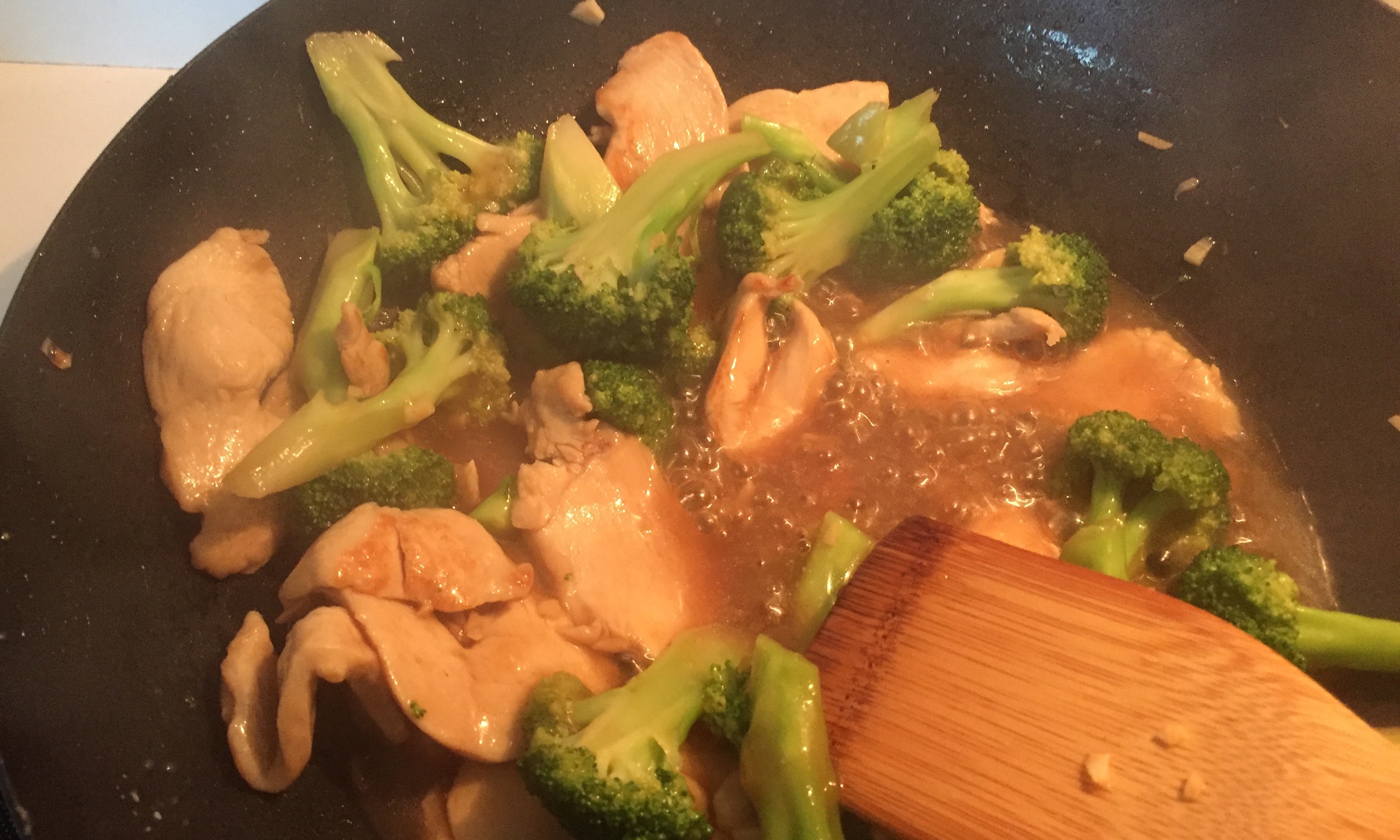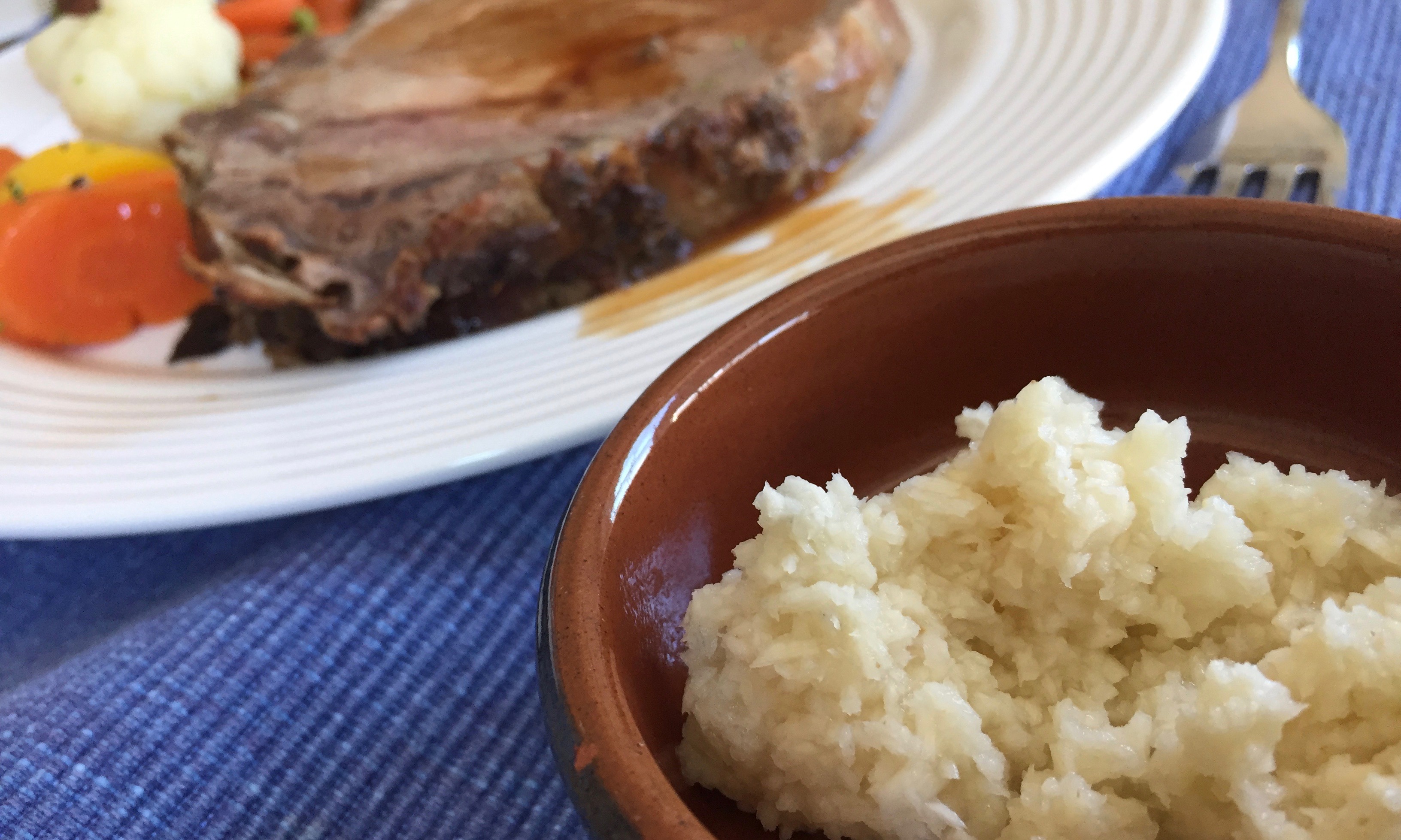Making a sauce is such a basic technique in Chinese cooking we have a term for it. In Cantonese, it’s called da heen which is the process of making a sauce in a stir fry using a cornstarch or tapioca starch thickening.
Here in the U.S., we associate stir fry dishes with a thick–usually a standard, dark–sauce. That’s not always how we have stir fry at home. Instead, we often stir fry vegetables and meat without a sauce. Usually the juices from the meat is enough to give it moisture. And sometimes we help it along with just a sprinkle of water, stock or wine.
But–I’ve noticed that children really like sauce in their food because then they can mix it into their rice. If you add more stock and water, it would just make the dish watery. The solution is to thicken the sauce.
Rather than having the ingredients sitting in a puddle of sauce I prefer sauce just clinging to the ingredients.
The da heen technique
We use tapioca or cornstarch. And since I doubt many of you have tapioca starch in your kitchen I’ll use cornstarch. Both use the same technique.
Making the cornstarch thickener
Let’s free ourselves from having exact measures. I’ll give estimates for one entree-size stir fry. Add a heaped spoonful of cornstarch into a bowl. Then add approximately double the amount of water. Blend the cornstarch with the water and set aside. Note my hygienic way of using my finger. They did this in our kitchen in the old days. Use a spoon if you are icky about this. Set this aside.
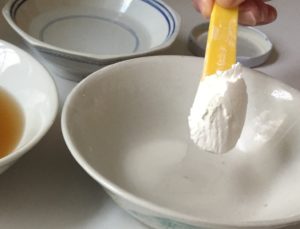
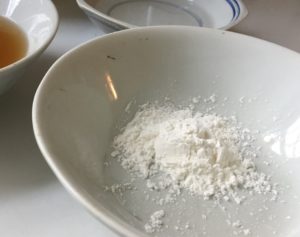
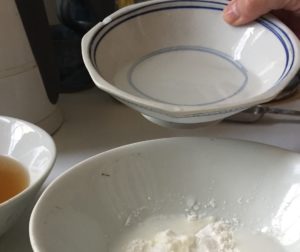
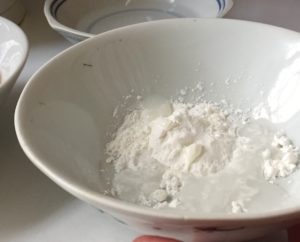
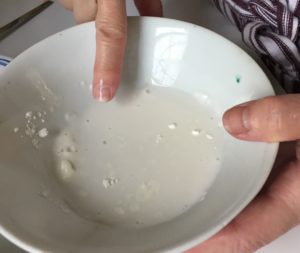
When to start making the sauce
The sauce is made at the end of a stir fry. When all the ingredients in the pan is cooked and the stir fry is almost done, check to see if there are any juices at the bottom of the pan. If a stir fry is done correctly, it should NOT have a lot of juices. If there is, either the vegetable wasn’t drained well before frying, or there was too much liquid in the marinade. Or stock was added to the stir fry when it got too dry.
Making the sauce
To give the stir fry a sauce, add ½ cup of chicken stock, seasoning sauce (see below) or water to the pan. Mix it well with the ingredients and watch the liquid start to bubble up. Raise the heat if necessary. You can also push the meat and vegetables away from the center to focus in on the liquid. While liquid is getting heated, stir the thickener again as the starch tends to stick to the bottom.
Thickening the sauce
As soon as stock and seasoning sauce start bubbling, dribble the cornstarch thickener–a little at a time–into the liquid and keep stirring. Don’t pour all of the thickening in yet.
Stop dribbling the thickener often to monitor how quickly the juice is thickening. As soon as it thickens to the viscosity you want, don’t add any more thickener. Mix the ingredients into the sauce, and remove pan from heat immediately. Discard rest of thickener.
Some home cooks add a splash of oil at the end of the thickening to give it a gloss finish.
This da heen technique is fool proof. If you’ve poured too much thickener too quickly, the sauce will get very gooey. If that’s how you want it, great. Otherwise, just quickly add more water or stock to water it down. Keep stirring the juices to blend the juices well so you don’t have one clump of starch.
Occasionally my sauce has not been thick enough; I quickly blend up some cornstarch thickener and repeat the process. It all depends on whether you want the thickening to just coat your ingredients or whether you actually want sauce you can scoop up with a spoon.
This whole da heen process takes less than one minute. Therefore have the cornstarch thickening ready so your stir fry is not overcooked.
Seasoning sauce
To start the sauce sometimes it is enough to just add water or stock to the stir fry. To enhance the flavor of the dish you can make a simple seasoning sauce. Just a dollop of oyster sauce or a splash of soy sauce, blended with some wine and water–making about ⅓-½ cup of seasoning sauce–is enough.
Your seasoning sauce could be a repeat of what you use in your marinade. It could include vinegar, dark soy sauce, sesame oil or chilli paste. I would add sesame oil with the seasoning only if I want a subtle taste of it. If you want a more robust essence, add sesame oil last just before transferring food to serving dish so the flavor is not cooked away.
My friends in the Chinese restaurant business in the U.S. say that most of their cooks make large pots of seasoning sauce in advance for standard American Chinese favorites–General Tso Chicken, Gung Pao Chcken or Chicken Broccoli. Some sauces are also sold in bulk by restaurant suppliers. Chinese chefs, and home cooks, make the seasoning sauce individually for each dish.
The process in photos
Here’s a series of photos I took of making sauce. It has no ingredients. I took pictures of a seasoning sauce (combining soy sauce and water) to show how easily it works.
Have cornstarch thickener ready and heat the seasoning sauce.
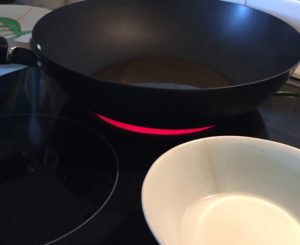
Wait for seasoning sauce to bubble up.
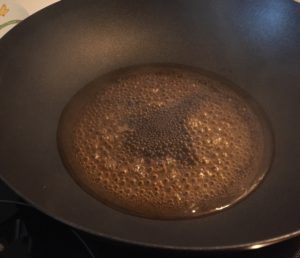
Add the cornstarch thickener.
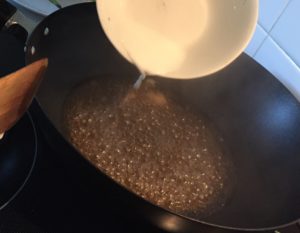
Keep stirring. Watch and check how thick you want sauce.

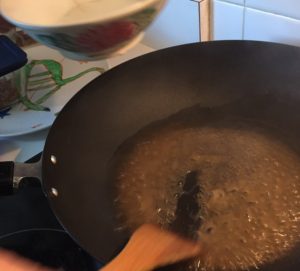
Done!
